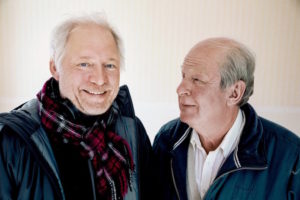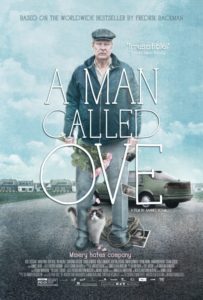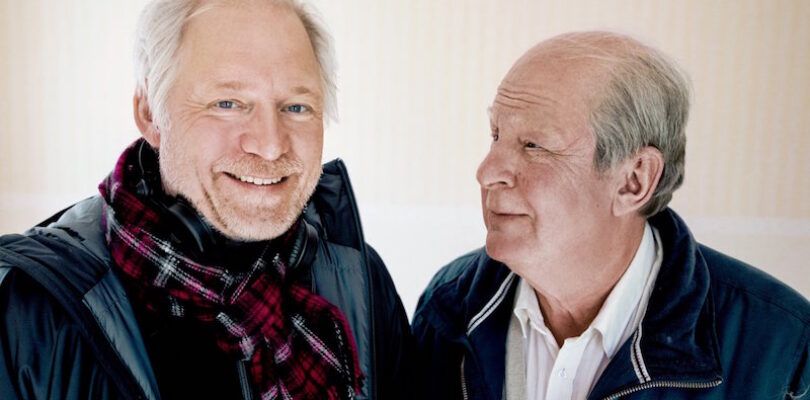A Man Called Ove (En man som heter Ove, 2015), is an emotional, inspiring drama with plenty of comic relief and one of the most feel-good films I’ve seen in quite a while. The film is a bildungsroman of its central character, Ove (Rolf Lassgård), who becomes a new version of his younger self through mourning the death of his wife. His process, as told by writer/director Hannes Holm, gracefully highlights, and punctuates, the human ability to honor the past and to learn presence in new surroundings. Starting from a place of loss, A Man Called Ove becomes a love story to friendship, with his neighbor, Parvaneh (Bahar Pars) and to rebirth. I spoke with Swedish writer/director Hannes Holm about writing a screenplay, who Ove represents, and the importance of all moments. The interview has been edited for brevity and clarity.
[divider]
CinemaNerdz: The film is based on a novel written by Fredrik Bachman. What was the process for you to adapt this story into a film?

Writer/director Hannes Holm and actor Rolf Lassgård from A Man Called Ove. © 2015 Music Box Films
Hannes Holm: We did not co-write [the film]. It was really the other way around—he [Bachman] didn’t want to get involved in the production, he gave the responsibility to me. It was a bit scary to adapt a book into a film. The freedom Bachman gave me was very good. The more responsibility you have, you want really to do a better job, [to give] a thank you for the freedom and [to] give it back. When he saw the film, the sound wasn’t finished yet; [it was the] end of the editing period. He didn’t say anything to me…it is tough to see a film that is not ready yet. In the end, when the film was finished, [he saw it again] and then he said, “I see how it has come together.”
CinemaNerdz: Who is Ove? Is he someone you know, is he an imagined character or person, or a stand-in for many?
Holm: In a way when you write Ove, you think of a person. To be honest, I was thinking of my own parents. [Those were] the times when there was no iPad or internet…things were smaller…my own parents were at the same age when Ove met Sonja. Everybody has examples and times in [their] life…everybody should like a story about an old man or an old woman.
CinemaNerdz: There is a general appeal to wisdom—to an older generation that carries that specific wisdom with them.
 Holm: The young woman, Parvaneh, when she meets Ove, it’s like their own experience. It’s important to have the age [element]…[the] old and young generation. Ove is still learning things from Parvaneh and Parvaneh learns many things from Ove. You can learn a lot from having relations between young and old. Young people have fresh ideas and older people have experiences. [It was] nice to have that kind of meeting between Ove and Parvaneh.
Holm: The young woman, Parvaneh, when she meets Ove, it’s like their own experience. It’s important to have the age [element]…[the] old and young generation. Ove is still learning things from Parvaneh and Parvaneh learns many things from Ove. You can learn a lot from having relations between young and old. Young people have fresh ideas and older people have experiences. [It was] nice to have that kind of meeting between Ove and Parvaneh.
CinemaNerdz: There is the scene where he attempts suicide. Suicide is one of those very difficult areas for films to encapsulate fully or to present in a lighthearted way. What feels significant about this scene?
Holm: It felt easy to write a scene like that in a book because you don’t see it, you read it…and the things you read are not shocking. I really didn’t understand that until the day they shot the scene and [I was] shocked…. This can be a problem. I really loved that the balance—[and] keep[ing] to the balance in the scene—keeps to the balance in the whole film. A deep, dark thing and, also, in a way, what is happening when someone is knocking at the door in the exact moment you try to commit suicide? The actor did a great job—[it is] easy to play too dark or to play too [comedic] as well. Like driving a car or walking on thin ice. It’s the right feeling to discuss.
CinemaNerdz: In the story, there is a beautiful set-up of Parvaneh being pregnant and Ove mourning the death of his wife. How did you avoid a more obvious kind of juxtaposition between these states of existence?
Holm: [In this film] you have the ingredients in the story [that are] not easy but heavy feelings—death and life. I have a favorite scene—when Ove and Parvaneh are walking and… happy and laughing—great contact—and Ove gets angry at the end and yells and screams at her, [so] they don’t talk about Sonja. That scene is like: I have it every day in life. To laugh in the middle of a quarrel…[I] reflect that in the film because it’s a bit of life. Every time when I can write such a scene I become happy because life can’t fit in all those happy times…there is a trade of the bad things, too.
[divider]

